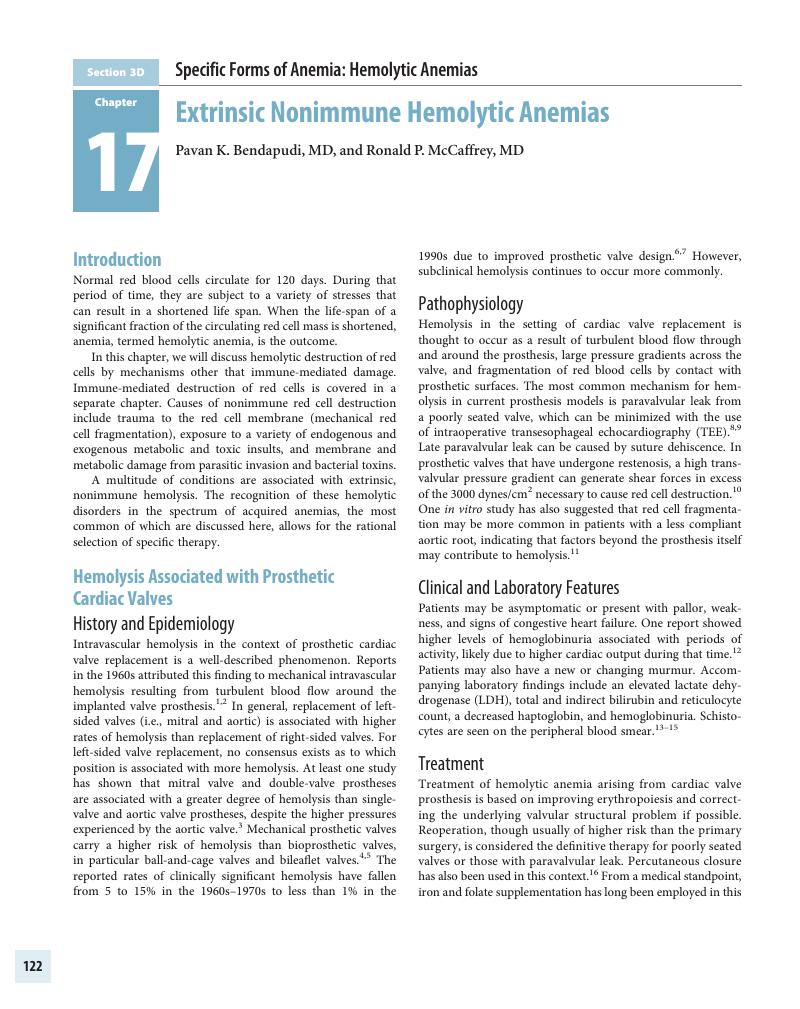Book contents
- Anemia
- Anemia
- Copyright page
- Contents
- Contributors
- Preface
- Section 1 The Normal Human Red Blood Cell
- Section 2 The Patient with Anemia
- Section 3 Specific Forms of Anemia
- Section 3, Part A Microcytic Anemias
- Section 3, Part B Macrocytic Anemias
- Section 3, Part C Hemoglobinopathies
- Section 3, Part D Hemolytic Anemias
- Chapter 12 Autoimmune Hemolytic Anemia
- Chapter 13 Drug-Induced Hemolytic Anemia
- Chapter 14 Red Cell Membrane Defects
- Chapter 15 Malaria
- Chapter 16 Microangiopathic Hemolytic Anemia
- Chapter 17 Extrinsic Nonimmune Hemolytic Anemias
- Section 3, Part E Hypoplastic Anemias
- Section 4 Secondary Anemias
- Section 5 Management of Anemia
- Section 6 Summary
- Index
- References
Chapter 17 - Extrinsic Nonimmune Hemolytic Anemias
from Section 3, Part D - Hemolytic Anemias
Published online by Cambridge University Press: 18 April 2018
- Anemia
- Anemia
- Copyright page
- Contents
- Contributors
- Preface
- Section 1 The Normal Human Red Blood Cell
- Section 2 The Patient with Anemia
- Section 3 Specific Forms of Anemia
- Section 3, Part A Microcytic Anemias
- Section 3, Part B Macrocytic Anemias
- Section 3, Part C Hemoglobinopathies
- Section 3, Part D Hemolytic Anemias
- Chapter 12 Autoimmune Hemolytic Anemia
- Chapter 13 Drug-Induced Hemolytic Anemia
- Chapter 14 Red Cell Membrane Defects
- Chapter 15 Malaria
- Chapter 16 Microangiopathic Hemolytic Anemia
- Chapter 17 Extrinsic Nonimmune Hemolytic Anemias
- Section 3, Part E Hypoplastic Anemias
- Section 4 Secondary Anemias
- Section 5 Management of Anemia
- Section 6 Summary
- Index
- References
Summary

- Type
- Chapter
- Information
- AnemiaPathophysiology, Diagnosis, and Management, pp. 122 - 127Publisher: Cambridge University PressPrint publication year: 2017

